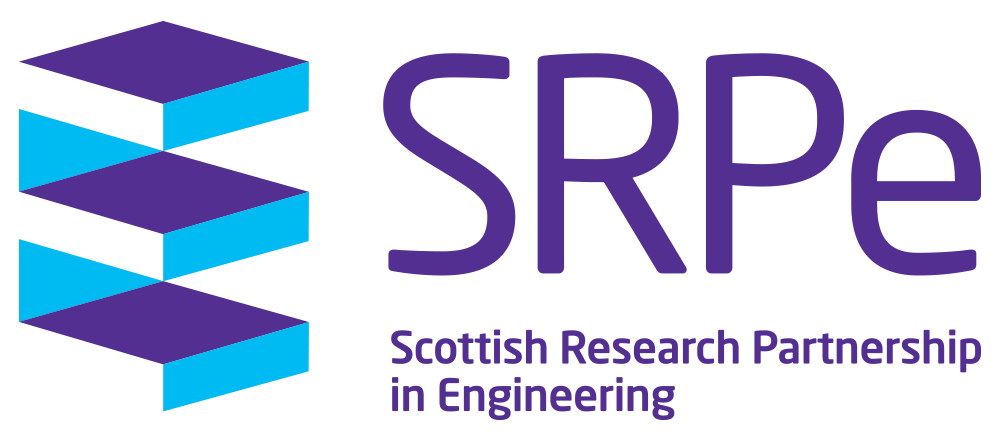Investigation of Thermoplastic Composite Forming Processes for Automotive and Industrial Structures Production
Academic Institution: University of Glasgow
Industry Partner: Johns Manville
Academic Supervisor: Dr Philip Harrison
PhD Student: Himanthi Nimrekha Kahavita Kahavitage Dona
Summary
Pure-unidirectional non-crimp fabric (pure-UDNCF) is a promising material for high-performance applications including aerospace, automotive and wind turbine blades, where high strength and stiffness with light weight are required. However, the complex and flexible nature of pure-UDNCF (stitches run perpendicular to the glass tow direction and contain no other stabilising fibres) presents challenges in forming, which requires precise control over the fabric's deformation. Simulation of the forming process is critical when manufacturing complex-shaped components to maximise material performance and decrease trial-and-error during manufacturing. To develop reliable models, equations that accurately represent the pure-UDNCF’s behaviour under different forming conditions are essential.
To develop constitutive models with accurate inputs, a series of material characterisation experiments is necessary to identify the parameters that define the fabric’s response. However, pure-UDNCF exhibits unique behaviours that differ significantly from conventional fabrics like woven fabrics. Due to the absence of stabilising fibres in the transverse direction, the in-plane deformation of pure-UDNCF is complex and dominated by both transverse extension and shear.
Therefore, existing fabric testing methods such as the Picture Frame test (PF test, all four sides are clamped orthogonal to the tows, see Fig.1a and b) and Uniaxial Bias Extension test (UBE test is a tensile test performed on a rectangular-shaped fabric with the warp and weft rows oriented ±45° to the direction of applied tensile force, see Fig.1c and d) cannot adequately capture the behaviour of the pure-UDNCF. This was evident after the results revealed a significant difference in shear stiffness measured by the two tests, with the PF test being significantly higher than the UBE test.
Fig.1: Undeformed and deformed specimens (a)&(b) PF test (c)&(d) UBE test
Recognising the limitations of existing test methods, new experiments were developed. The experimental error of the PF test was investigated using a few modifications to address problems due to unavoidable tow misalignments. During the PF tests, in addition to shear, an in-plane bending contribution to the measured force was also identified. Even after these modifications, discrepancies between the modified PF and UBE tests remained, indicating that additional deformation modes, including in-plane bending in the PF test and stitch stretching in the UBE test, may affect the measured results. To isolate each type of deformation,new tests were designed that target specific combinations of shearing and stretching. This examines how shear stiffness changes with different levels of tensile stretching along the fabric's stitching direction. Using these data, a method was developed to separate the contributions from each deformation mode, resulting in reliable estimates of the different fabric stiffnesses. Appropriate data obtained from these experimental methods can be used as input parameters to bespoke constitutive models, to predict the material behaviour under different conditions. These models are valuable for designers and engineers working with fabric-based composites in industries that require durable, lightweight materials with complex shapes. The research was further extended to perform hemispherical forming experiments on pure-UDNCF (see Fig.2). A couple of fixation methods were used to maintain the desired shape and facilitate the handling of formed specimens during post-analysis. The data collected from the formed hemispheres will be used to validate numerical models developed to predict the forming behaviour of pure-UDNCF in real-world applications.
Fig.2: Formed hemisphere
Key results / outcomes
Shear Testing Results: Significant differences were observed between the UBE and PF tests. This reveals that existing shear tests may not accurately reflect the behaviour of pure-UDNCF due to complex deformation modes.
Error Reduction in PF Test: Modified PF tests effectively reduce experimental error (minimise the unavoidable tow misalignments).
The new experiments with specific combinations of shearing and stretching can be successfully applied to characterise unidirectional fabrics with transverse extension.
Separation of Deformation Contributions: The new method developed to isolate the contribution from shear, in-plane bending and tensile strains in the stitch direction allows for more accurate predictions of fabric response under various conditions.
Hemispherical Forming: The two fixation methods effectively facilitate handling formed specimens with long-term stability.
Input Data for Modelling: Experimental results from various tests provide input data for constitutive models, providing a foundation for future simulations and predictive tools in the forming behaviour of pure-UDNCF, relevant for advanced composite applications.
Journal and Conference Papers
Journal paper
Kahavita, K. D. H. N., McCarthy, E. D., Zhang, M., Brádaigh, C. Ó., & Harrison, P. (2023). Characterising the shear resistance of a unidirectional non-crimp glass fabric using modified picture frame and uniaxial bias extension test methods. International Journal of Material Forming, 16(5), 49.
Conference papers
Kahavita, K. D., McCarthy, E. D., Zhang, M., Brádaigh, C. Ó., & Harrison, P. (2022). Investigation of the In-Plane Deformation Kinematics of a Unidirectional Non-Crimp Glass Fabric. International Conference on Manufacturing of Advanced Composites. Sheffield.
Kahavita, K. D., Harrison, P., McCarthy, E. D., Zhang, M., & Brádaigh, C. Ó. (2023). Characterization of the In-Plane Shear Behaviour of a Unidirectional Non-Crimp Glass Fabric. 20th International Conference on Experimental Mechanics (ICEM20) (pp. 283-284). Porto: European Society for Experimental Mechanics.
Kahavita, K. D., Harrison, P., McCarthy, E. D., Zhang, M., & Brádaigh, C. Ó. (2023). Characterising the In-plane Deformation Behaviour of a Unidirectional Non-Crimp Glass Fabric. 17th International Conference on Advances in Experimental Mechanics. Glasgow: British Society for Strain Measurement.
Awards
First Runners-up in the Industry Doctorate Programme Poster Competition (SRPe Annual Conference 2023)
Student attendance award at the 20th International Conference on Experimental Mechanics (ICEM20) (Department of Engineering, University of Porto)
Contact Details
Himanthi Nimrekha Kahavita Kahavitage Dona
PhD Student, University of Glasgow
2502081K@student.gla.ac.uk
Dr Philip Harrison
Senior Lecturer in Materials and Manufacturing, University of Glasgow
Philip.Harrison@glasgow.ac.uk


